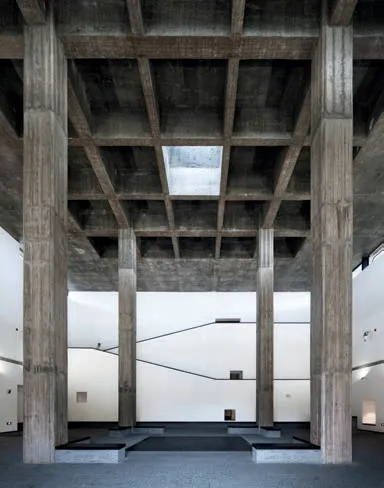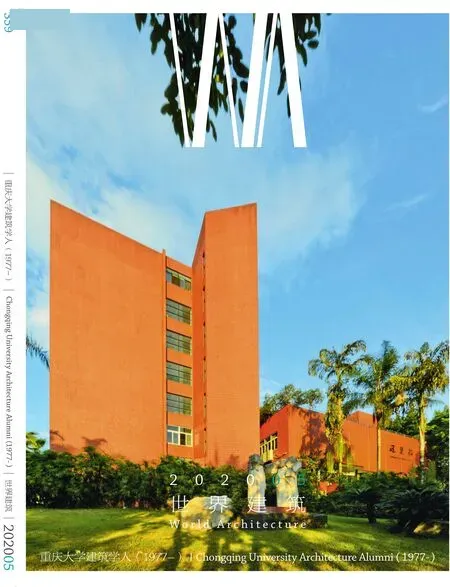苏州御窑遗址园暨御窑金砖博物馆,苏州,中国
建筑设计:家琨建筑设计事务所
苏州陆墓御窑遗址公园位于苏州市相城区,主要功能为御窑遗址保护,金砖等文物的陈列展示及相应的文化研究与交流。博物馆意在通过建筑的组织和景观营造,保护珍贵的文物遗迹,展现御窑金砖的历炼过程,感触御窑金砖的历史文化内涵。
采用周边围合的布局方式,营造园林式的内向型空间,使核心保护区面积最大化。基地北面临桥设林荫道,隔绝喧嚣,营造氛围,借助体量高度遮挡南边小区。内部利用生产用房和窑群的分布组织视线,流线设计迂回曲折,曲径通幽,移步换景。
博物馆主体建筑是对砖窑和宫殿的综合提炼,体量雄浑,出檐平远,以现代手法演绎传统意蕴。它不是砖窑,也不是宫殿,而是兼具“砖窑感”和“宫殿感”的当代公共建筑,展现出“御窑”的精神内涵。
博物馆建筑群使用当代广泛应用的各种砖料构筑,层层递进,烘托出金砖。它不仅仅是关于金砖的博物馆,也是一部从古至今的砖的编年史。
景观设计突出遗址感,以自然荒野的景观设计手法隐喻历史,同时更好地保护御窑遗址原貌。公园内部通过整窑、半窑、残窑等多种状态的窑,形成群体感,再现当时金砖生产场景盛况,并可从多方面了解窑的构造与金砖的生产过程,扩充博物馆本身的知识性。
Suzhou Imperial Kiln Ruins Park & Museum of Imperial Kiln Brick is located in Xiangcheng District in Suzhou. It is kept intact and currently used mainly to preserve the historical ruins, to display cultural relic such as Jin Zhuan (the literate translation is the Golden Brick) for related cultural investigation and communication. The museum aims to display the entire manufacturing process of Jin Zhuan through the blending of architecture and landscape, as well as offering a vivid experience of the cultural and historical essences of the imperial kiln.
The development of the city has surrounded this land. In order to create an immersive historical atmosphere for tourists, the museum adopts an encircled planning. Buildings and the boulevard block noise, while the circuitous colonnade connects scattered buildings forming a centripetal space that echoes to the introversive space of a traditional Chinese garden and maximises the area of the protection section.
The main body of the museum is an abstract summary of the imperial kiln and the imperial court with a forceful mass and a formal plainness inspired by the protruding eaves of traditional Chinese architecture. The internal space is divided into three parts - the abstraction of the palace; the production,transportation and the use ofjin zhuan(imperial brick), and the abstraction of the brick kiln.
The museum is neither a kiln nor an imperial court, but a contemporary public architecture that combines the embodiment of both.
The architectural complex employs a variety of widely applied contemporary constructions with bricks that highlight the presence ofjin zhuan. The architecture presents more than a museum ofjin zhuan, but also the annals of bricks from the past to the present.
The landscape design pictures a sense of wilderness so as to emphasise the condition of ruins and to keep the original status of the site. The complete, half and broken kilns inside the park are arranged to form a sense of community that evokes visitors' imagination of the heyday of the production ofjin zhuan. The museum endeavors to enhance its academic performance by providing an opportunity to learn about the structure of the kiln and the production process ofjin zhuan.

1 御窑金砖博物馆序厅/Preface hall of the Museum

2 总平面/Site plan

3 御窑金砖博物馆北立面/North side of the Museum

4-6 剖面/Sections
项目信息/Credits and Data
业主/Client: 苏州市相城区文化体育局/Suzhou Xiangcheng District Culture and Sports Bureau
主创建筑师/Principal Architect: 刘家琨/LIU Jiakun
设计团队/Design Team: 田申,王玺,刘速,杨鹰,林宜萱,王凯玲,张瞳,苏思辉,许皓,毛炜希,李静/TIAN Shen, WANG Xi, LIU Su, YANG Ying, LIN Yixuan, WANG Kailing, ZHANG Tong, SU Sihui, XU Hao, MAO Weixi, LI Jing建筑面积/Building Area: 15,326m²
基地面积/Site Area: 38,875m²
设计时间/Design Period: 2012.05-2014.12
施工时间/Construction Period: 2013.11 - 2016.05
摄影/Photos: 姚力,存在建筑-建筑摄影/YAO Li, Arch-Exist

7 首层平面/Ground floor plan

